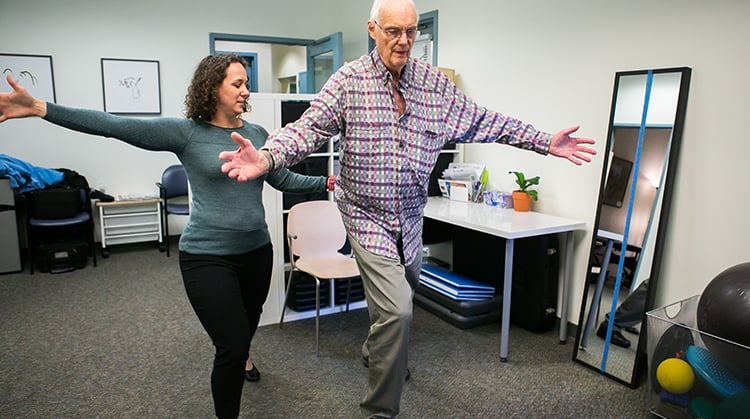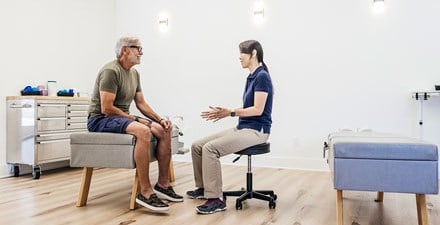
According to the Centers for Disease Control and Prevention, more than 1 out of 4 older Americans fall each year. Falling once doubles the chances of falling again. Sadly, every 19 minutes, an older adult dies as a result of a fall. A fall can result in unwanted outcomes, including injury, loss of independence, and a decreased ability to do the things most important to you.
There is good news, though. Research shows that, with a bit of work, the risk of falls can decrease.
Many things can lead to falls, especially as we get older. Poor eyesight, loss of balance, and certain medicines are a few common causes. Lack of strength or flexibility, poor footwear, and clutter in the walking areas at home also can cause falls.
Taking Action Can Preserve Quality of Life and Save a Life
Two important factors in falls safety are:
- Prevention. This means addressing any risk factors that could cause a fall.
- Intervention. This involves making the body more durable and tough and learning how to fall. The goal is to reduce the likelihood that an impact will cause harm.
Regular physical activity that includes endurance, muscle strengthening, and balance training can reduce your risk of fall-related injuries. According to the Journal of the American Geriatrics Society, physical activity, including exercise, reduces falls by 13% to 40% in community‐dwelling older adults.
In addition, since the odds are that most people will fall, it is important to condition the body to absorb the shock of falls. According to the Journal of Bone Mineral Research, resistance and impact training can improve bone mineral density, thus protecting you from falls.
Check out these five tips to help limit your chances of a fall that could lead to injury, a hospital visit, or worse.
- Maintain mobility and improve strength. Stay active by doing physical activities that you enjoy. Take part in tai chi, yoga, or walking. Doing so will help you maintain strength, flexibility, coordination, and balance. It also can reduce your fear of falling. But check with your doctor or physical therapist first to see what types of activities are safe for you. The U.S. Preventive Services Task Force recommends physical therapy (with exercise) focused on balance, stability, and the ability to perform everyday tasks to help prevent falls.
- Get a falls screening. Ask your physical therapist or primary care provider about a falls screening. A physical therapist or other trained health care provider can assess your falls risk and work with you to find ways to decrease your risk of falling. Tell them if you have any dizziness, loss of balance, or trouble seeing. Make sure to tell them if you fell in the last year. They may even recommend that you attend a falls safety class to learn how to fall safely.
- Mind your medications. If you take more than four medicines (prescribed or over the counter), your risk of falling is higher. Many drugs can cause you to be dizzy, lose your balance, have blurry vision, and much more. Review your medications with your pharmacist if you have any of these symptoms. Then, talk to your doctor about whether a change is right for you.
- Eliminate hazards around your home. Look around your home with a friend or family member to identify anything that could cause you to trip or slip. Stairs with no railing, throw rugs, clutter, poor lighting, and even wobbly furniture or handrails could cause a fall. If you cannot fix or remove the items yourself, ask a friend or family member to help.
- Improve home safety. Add a secure grab bar in the tub or shower and next to the toilet. A bar will give you sturdy support to hold on to when the floors or your feet are slippery. Check with your doctor or physical therapist about programs that offer home safety assessments. Your area agency on aging or the National Council on Aging may be another source of help or support.
If you have experienced a fall or have a fear of falling, a physical therapist can help you assess your falls risk factors and develop a plan to address them. A physical therapist also can help you build balance and strength to prevent more falls or recover from a fall-related injury. Physical therapists are movement experts. They improve quality of life through hands-on care, patient education, and prescribed movement. You can contact a physical therapist directly for an evaluation. To find a physical therapist in your area, visit Find a PT.
Visit our Health Center on Falls for more information.


